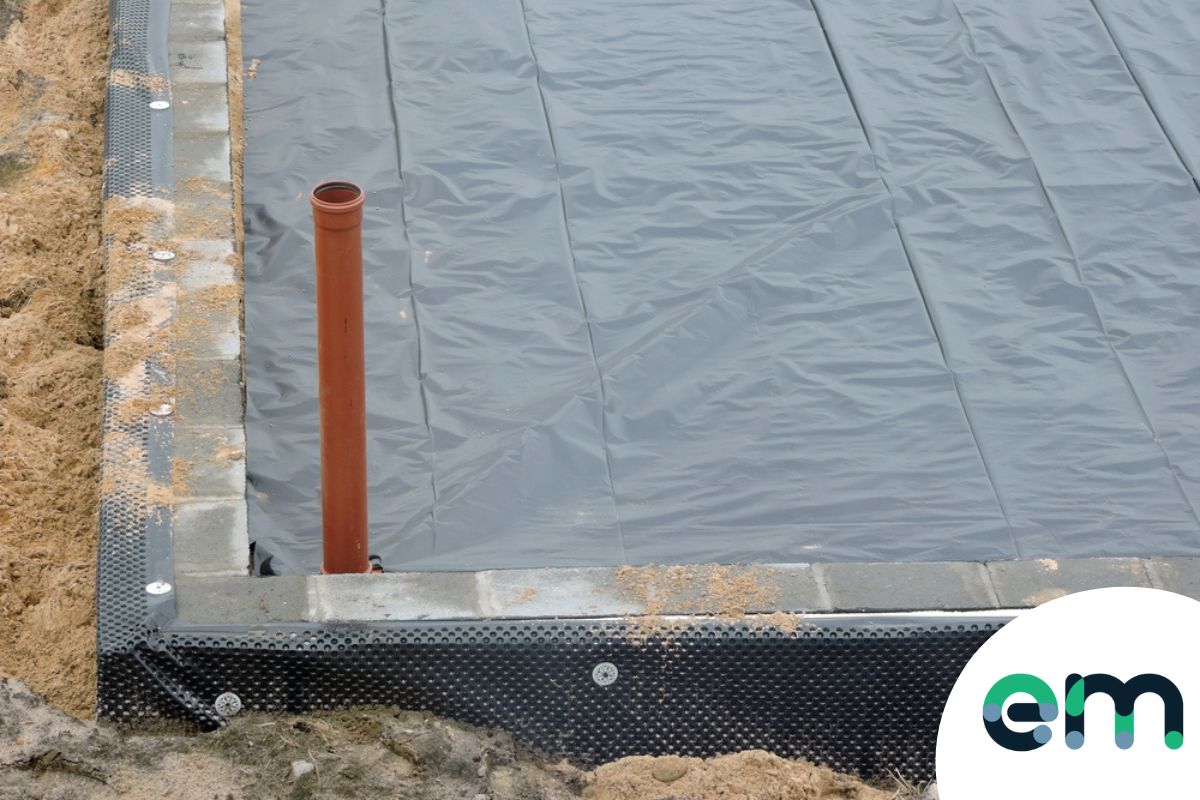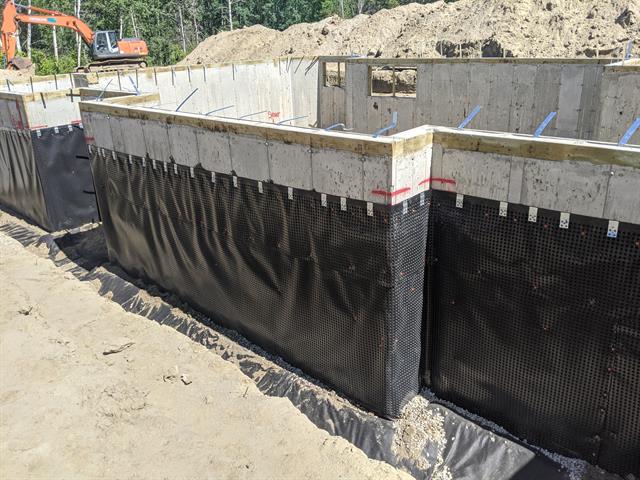How come damp removal newcastle is your primary solution against household mold
How come damp removal newcastle is your primary solution against household mold
Blog Article
Recognizing the Relevance of Damp Proofing in Stopping Structural Damage
Moist proofing acts as a necessary defense against wetness infiltration in structures. This safety measure can stop significant architectural damages, yet many residential or commercial property proprietors stay uninformed of its importance. Identifying the indicators of moisture and understanding the different services available can be important. However, disregarding wet proofing can result in extreme consequences. What are the specific dangers and options that building proprietors should consider?
What Perspires Proofing and Exactly How Does It Function?
Damp proofing offers as a necessary barrier against wetness breach in buildings. damp removal newcastle. This process involves using details products and techniques to stop water from permeating wall surfaces, floorings, and other architectural aspects. Usually, damp proofing can be achieved through the installation of wet proof membranes, finishes, or using specialized sealants.These approaches work by producing a protective layer that prevents moisture motion, making certain that the interior atmosphere continues to be dry and healthy. Wet proofing is specifically important in locations vulnerable to high moisture or groundwater, as it assists maintain the integrity of the framework over time.Moreover, efficient moist proofing adds to power effectiveness by protecting against warmth loss connected with wet atmospheres. By resolving prospective moisture issues prior to they rise, damp proofing serves as a positive procedure in guarding structures from the destructive effects of water damages, ultimately lengthening their lifespan and maintaining their worth
Common Indications of Moisture in a Structure
Dampness concerns within a building can manifest through several recognizable indications that suggest the existence of dampness. One famous sign is the appearance of water stains on wall surfaces or ceilings, which typically shows moisture infiltration. Furthermore, bubbling or peeling off paint can suggest that excess moisture is caught under the surface area, resulting in wear and tear. Another common indicator is the existence of mold and mold, which grow in moist problems and can usually be determined by their mildewy odor. A rise in moisture degrees can trigger condensation on windows and various other surfaces, highlighting dampness issues. Lastly, irregular or warped floor covering may indicate underlying wetness that endangers structural stability. Recognizing these indications early can assist mitigate potential damage and maintain a safe living atmosphere. Regular examinations and prompt activity are necessary in attending to moisture problems before they rise.
The Threats of Disregarding Damp Proofing
Disregarding moist proofing can bring about substantial threats to a building's architectural stability, as wetness build-up may compromise foundations and walls. Furthermore, long term wetness develops an environment favorable to mold development, positioning significant wellness risks to passengers. Addressing these risks is necessary for making certain both safety and security and longevity of the building.
Structural Stability Risks
They reveal their homes to significant architectural honesty risks when homeowners ignore the relevance of reliable moist proofing. Extended moisture infiltration can result in the development of mold and mildew, which compromises foundational components and can jeopardize overall stability. Furthermore, excess dampness can wear down concrete and brickwork, resulting in fractures and architectural failures. Wood parts are particularly vulnerable; they can rot and shed load-bearing ability, positioning significant threats to the building's structure. Furthermore, neglected damp problems might attract parasites, such as termites, which better aggravate structural degeneration. Ultimately, neglecting wet proofing procedures can bring about costly fixings and possible safety and security threats, emphasizing the crucial duty of aggressive damp monitoring in preserving the honesty of properties.
Health And Wellness Danger Issues
Exactly how can a seemingly minor oversight bring about severe health and wellness threats? Ignoring wet proofing can produce an environment for mold and mildew development, which positions considerable health dangers. Mold spores can set off allergies, respiratory concerns, and various other wellness complications, particularly in prone populaces such as youngsters, the senior, and people with pre-existing conditions. In addition, relentless dampness can attract parasites like pests and rats, which bring diseases that further endanger health. The presence of wetness also contributes to a decrease in interior air quality, intensifying bronchial asthma and other respiratory conditions. The failing to attend to wet concerns not only intimidates architectural stability but also endangers the health of occupants, highlighting the essential requirement for efficient damp proofing procedures.
Various Kinds of Damp Proofing Solutions
Different aspects can add to damp problems in buildings, choosing the appropriate damp proofing remedy is vital for protecting architectural honesty. Numerous options are offered, each customized to particular conditions.One common service is a damp-proof membrane layer (DPM), typically constructed from polyethylene or bitumen, which is set up in walls and floorings to avoid wetness ingress. An additional option is damp-proof courses (DPC), which are layers of waterproof material positioned within walls to obstruct increasing damp.Chemical damp proofing includes infusing waterproofing chemicals into wall surfaces to produce a barrier against dampness. Furthermore, exterior therapies such as tanking, which involves using a water-proof layer to the outside of structures, can be effective in protecting check here against water penetration.Each solution has its benefits and is selected based upon the structure's certain issues, ecological problems, and lasting maintenance considerations, guaranteeing excellent security against damp-related damage.

The Price of Damp Damages vs. Prevention
Understanding the economic effects of wet damages compared to prevention highlights the importance of aggressive procedures. The expenses related to wet damages can be significant, including fixings to structural components, mold and mildew remediation, and potential health-related costs. Property owners might encounter significant monetary strain if considerable damages happens, causing enhanced insurance premiums and lost building value.In comparison, investing in moist proofing options is normally much more cost-effective. First expenses for prevention techniques, such as enhancing or mounting damp-proof membranes drain systems, are typically exceeded by the long-lasting savings from staying clear of expensive repair work. Additionally, preventing wet problems can enhance a property's general value and appeal, making it a wise financial investment. When reviewing the price of wet damage versus prevention, it ends up being clear that taking positive steps can safeguard monetary rate of interests and maintain the integrity of the property gradually.
Choosing the Right Damp Proofing Technique for Your Home
Which wet proofing approach is most ideal for a particular property frequently depends on various factors, including the building's age, existing moisture concerns, and local environmental problems. For older frameworks, conventional techniques such as bitumen membrane layers or cementitious coverings may be more efficient, as they can offer a durable barrier against increasing wet. In contrast, more recent buildings might take advantage of contemporary solutions like injected damp-proof courses, which are less invasive and can be tailored to certain wetness challenges.Additionally, homes in areas with high water tables or heavy rains may need even more innovative strategies, such as cavity wall drain systems or exterior waterproofing. House owners should likewise think about the specific products utilized in their structure's building, as some methods may not work. Eventually, a thorough assessment by an expert can lead homeowner in selecting one of the most effective damp proofing approach customized to their unique scenarios.
Maintaining Your Damp Proofing System With Time
Normal maintenance of a moist proofing system is crucial for guaranteeing its lasting efficiency and securing a residential property from moisture-related damages. Home owners should perform regular assessments to identify any kind of indications of wear or concession in the moist proofing layer. This consists of checking for cracks, peeling off paint, or mold development, which might indicate wetness intrusion.Additionally, it is recommended to clean rain gutters and downspouts on a regular basis to stop water accumulation around the foundation. If deterioration is observed.Engaging expert services for regular analyses can better enhance the toughness of the system, reapplying sealants or membranes might be needed. These professionals can offer understandings right into prospective susceptabilities and recommend timely repair work.
Regularly Asked Questions
How Much Time Does Damp Proofing Therapy Last Prior To Requiring Repair Work?
The long life of wet proofing treatment generally varies from 10 to 30 years, relying on variables such as the method utilized, ecological problems, and maintenance methods. Routine inspections can help identify when repair work may be needed.
Is DIY Damp Proofing Effective Compared to Specialist Providers?
The efficiency of do it yourself damp proofing varies significantly. mould removal newcastle. While some people may achieve satisfying outcomes, professional services typically ensure detailed services, leveraging competence and quality products to stop future concerns a lot more reliably than most do it yourself efforts
Can Damp Proofing Improve Indoor Air High Quality?
The inquiry of whether wet proofing can improve interior air high quality occurs frequently. Reliable moist proofing minimizes wetness degrees, therefore minimizing mold and mildew growth and allergens, inevitably adding to a healthier interior setting for residents.
Are There Particular Regulations for Damp Proofing in Various Locations?
Laws for moist proofing differ by region, usually influenced by local building ordinance and environmental problems. Conformity assurances efficient moisture control, advertising and securing frameworks security, which highlights the need for adherence to these specific laws.

What Are the Long-Term Advantages of Proper Damp Proofing?
The long-term advantages of appropriate wet proofing include boosted structural integrity, decreased maintenance expenses, boosted interior air quality, and enhanced property worth. These advantages add to a much healthier living environment and extended lifespan of buildings. Commonly, wet proofing can be attained via the setup of damp evidence membranes, coverings, or the usage of specialized sealants.These techniques work by producing a protective layer that hinders wetness motion, making certain that the interior environment remains completely dry and healthy and balanced. Damp proofing is specifically vital in locations vulnerable to high humidity or groundwater, as it helps keep the stability of the structure over time.Moreover, efficient damp proofing adds to energy efficiency by preventing heat loss linked with moist environments. Overlooking damp proofing can lead to considerable threats to a structure's structural stability, as dampness accumulation might compromise structures and wall surfaces (damp removal newcastle). Different aspects can contribute to damp problems in structures, picking the proper damp proofing remedy is important for protecting architectural stability. Which moist proofing technique is most suitable for a specific property typically depends on different elements, consisting of the structure's age, existing dampness issues, and regional environmental conditions
Report this page